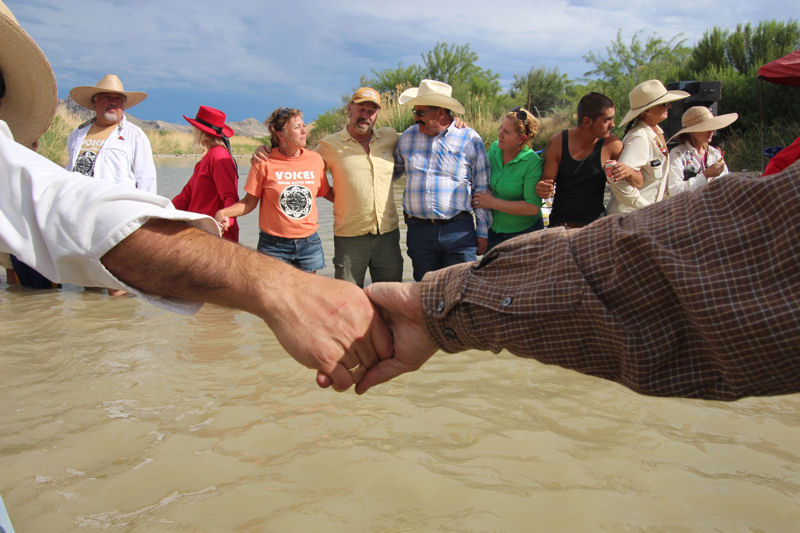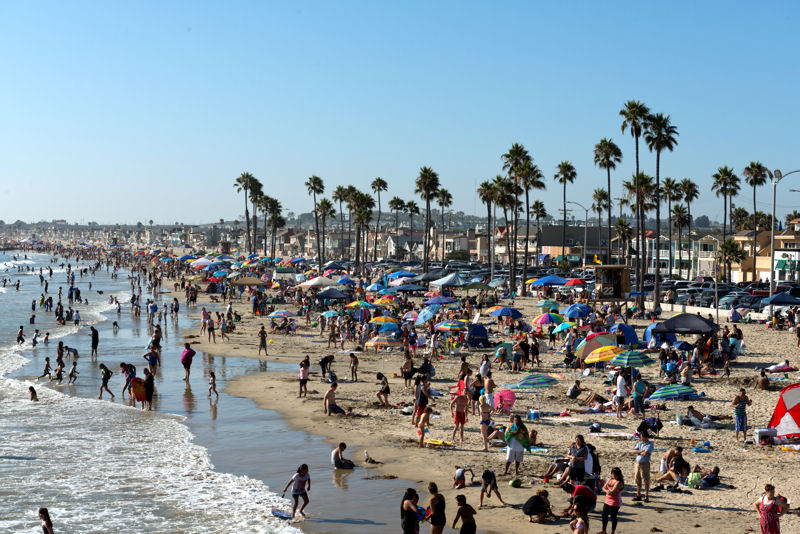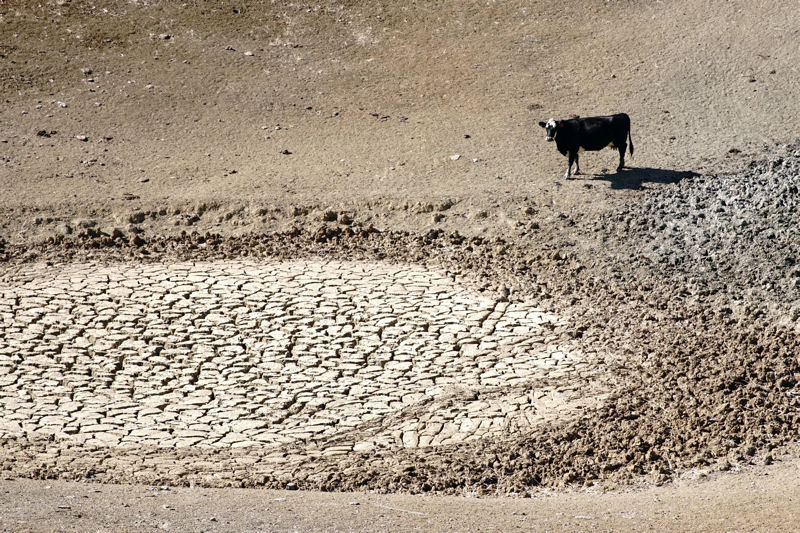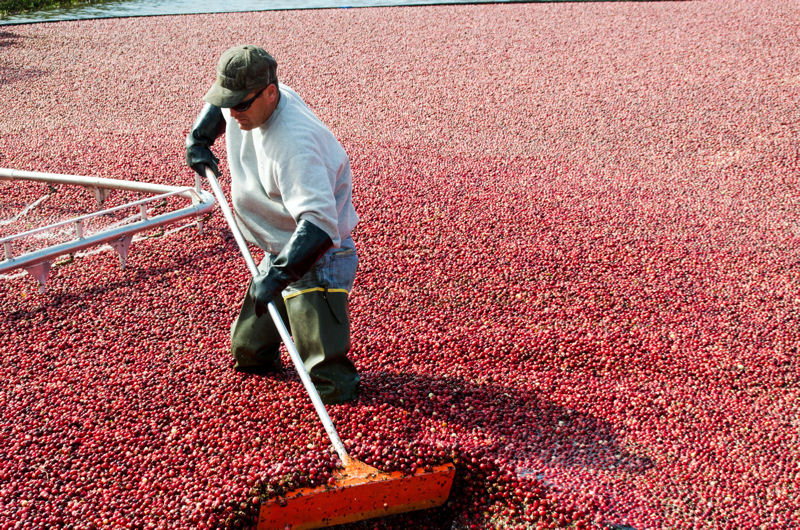
The Water/Ways exhibit showcases the relationship between people and water through images from events such as the 2014 Voices from Both Sides event where Americans and Mexicans gathered, joining hands across the Rio Grande. Photo courtesy of Lorne Matalon, Smithsonian.
Through its Museum on Main Street (MoMS) program, the Smithsonian Institution Traveling Exhibition Service (SITES; Washington, D.C.) is launching two travelling exhibitions to engage the public in learning about the significance of water.
The Water/Ways and H2O Today exhibitions are part of the Smithsonian’s “Think Water” initiative, which brings together exhibitions, educational resources, and public programs to foster important national and global conversations and develop civic engagement and citizen-science projects that allow students and other members of communities to interact with waterways.
Water/Ways exhibit fosters community discussion and involvement
The 65-m2 (700-ft2) Water/Ways exhibition was developed to serve as a community meeting place that fosters conversations about how water affects American culture with a focus on the relationships between people and water. It is designed for small and rural museums and will visit more than 180 smaller communities across 30 states during the next 6 years.

The Smithsonian Institution’s Water/Ways exhibit will explore the central role of water in people’s lives, which is evident by the large crowd gathered to enjoy Newport Beach in California. Photo courtesy of the Jon B. Lovelace Collection of California Photographs in Carol M. Highsmith’s America Project, Library of Congress, Prints and Photographs Division.
For Water/Ways, MoMS is partnering with state humanities councils — private, nonprofit partners of the National Endowment for the Humanities (Washington, D.C.) — to explore the centrality of water in people’s lives by examining water as both an environmental necessity and a key cultural element. With networks of on-the-ground resources, state humanities councils will help communities learn how to tell their stories and incorporate them into the work that supports the exhibition, according to Robbie Davis, project director with MoMS.
“The councils embraced Water/Ways from the start because they saw a great opportunity to create relationships with organizations working on water and other environmental issues and to bring culture and the humanities into discussions about water in their states,” Davis said. “We want people to realize how water can be just as important to a community on a cultural and human level as it is on a health and environmental level.”
The exhibit will include objects and text but will focus on imagery such as photographs, videos, and digital components including a touchable relief map of the Elwha River watershed in Washington state.
“Visuals help link people to stories,” Davis said. “We are hopeful that as the exhibition visits different regions, we will amass a body of powerful stories about how people connect to water. We plan on featuring some of these stories in video kiosks that travel with the exhibition.”
Stories collected in Minnesota will be shared with the Minnesota Humanities Center to create an interpretive map, he said.
Cities build their own interactive H2O Today exhibit

The Smithsonian Institution’s H2O Today exhibit will explore global water issues, water science, and the diversity and challenges of water, which include drought conditions resulting in such depleted ponds as this one in California. Photo courtesy of Cynthia Mendoza, U.S. Department of Agriculture.
H2O Today, designed for urban museums in larger cities, will explore global water issues, water science, and the diversity of and challenges associated with water. The exhibit will promote conservation, innovation, and creativity across science, technology, and art to share the global water story.
As a build-it-yourself package, host venues are provided with print-ready graphic files, audiovisual content, and other educational tools and resources.
“We essentially provide the foundation and programming for venues to use in fabricating the exhibit,” said Sara Artes, exhibition specialist and project director at the Smithsonian. “One of the biggest emphases that we encourage with this program is to crowd-source creative solutions to local water problems. We provide guidance on how to incorporate that into to the exhibit.”

Local water uses such as in harvesting cranberries in Wisconsin will take the spotlight in the H2O Today exhibit. Photo courtesy of Helen Chen, Rochester, Minn.
For crowd-sourcing, organizations hosting the exhibit will reach out to their communities for ideas on projects that address the themes of the exhibition at a local level, said Jennifer Schommer, SITES assistant director of public affairs. “The host organization could start the discussion before the exhibition opens to garner programming ideas or content for the exhibition to highlight the local community,” she said. “It’s a way for audiences to engage in the conversations of H2O Today in unique ways that move beyond the typical visitor interaction of panels and objects in cases.”
The ultimate goal behind both exhibits is to foster community engagement and inspire a “clearer understanding of just how critical water is in their lives and communities,” Davis said.
— Jeff Gunderson, WEF Highlights








July 26, 2016
Featured